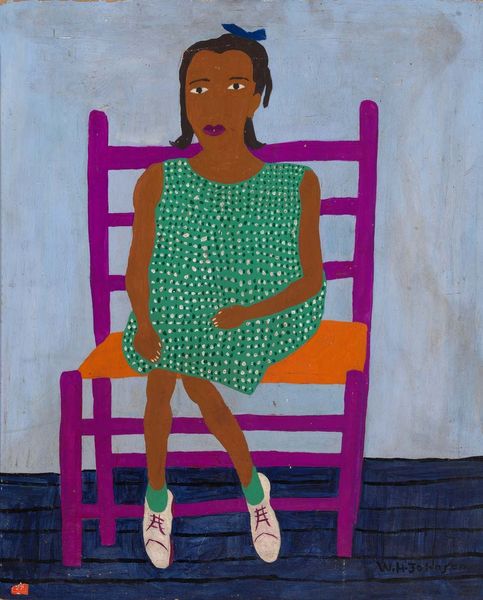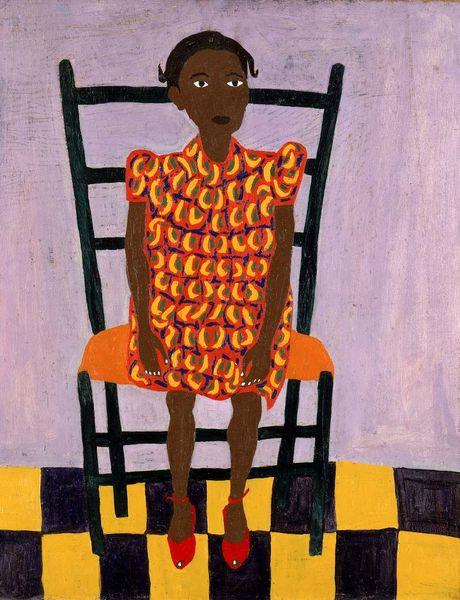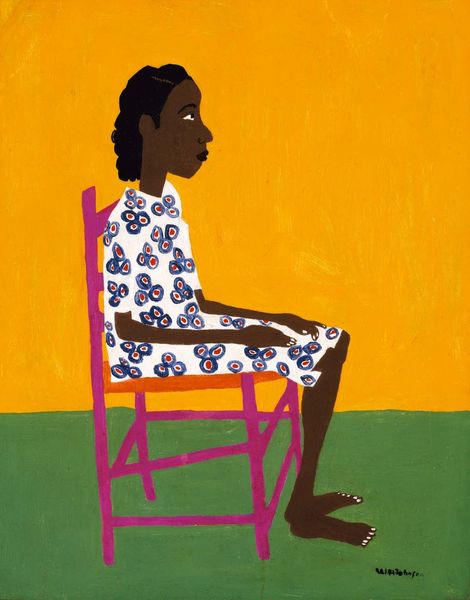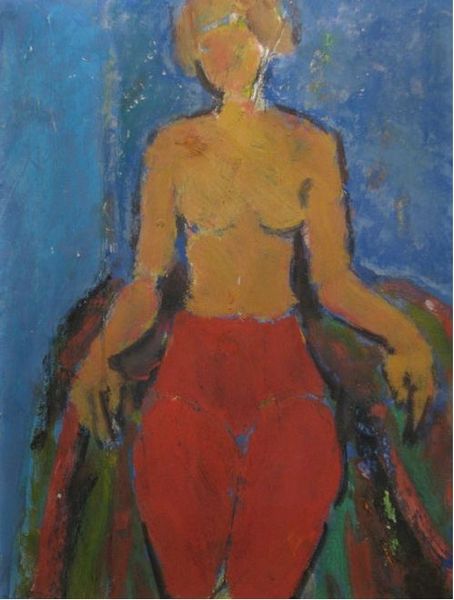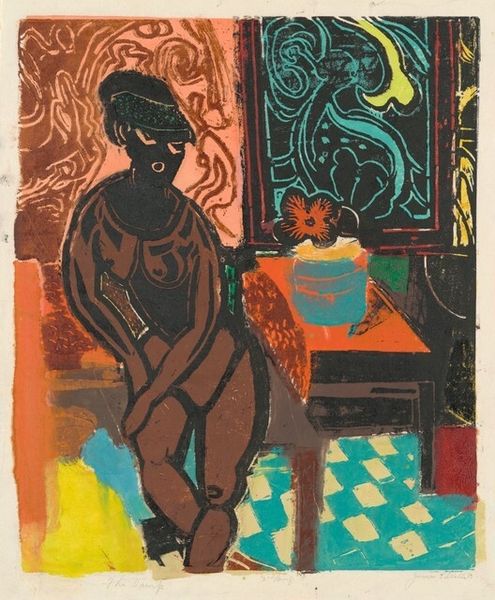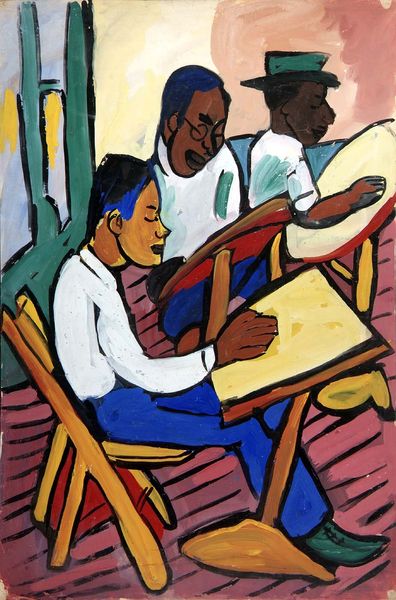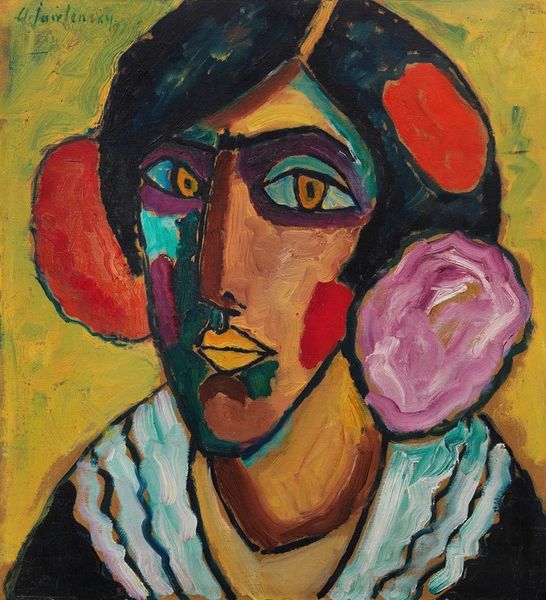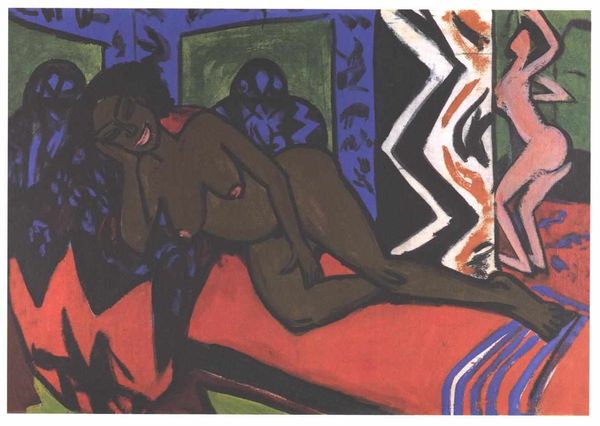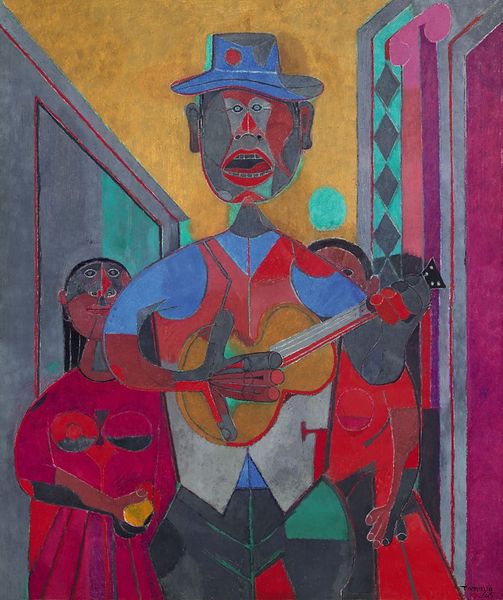
painting, acrylic-paint
#
portrait
#
painting
#
harlem-renaissance
#
acrylic-paint
#
figuration
#
acrylic on canvas
#
portrait art
Copyright: William H. Johnson,Fair Use
Editor: William H. Johnson’s "Seated Woman in Pink Blouse," created in 1939 using acrylic on canvas, presents a striking portrait. The bold colors and flattened perspective give it an almost graphic quality. What stands out to me is how the visible brushstrokes and simplified forms speak to a deliberate engagement with materiality. What do you see in this piece, particularly concerning the relationship between the materials used and the social context it was created in? Curator: The emphasis on acrylic on canvas places this work within a specific history of material production and access. Johnson's choice of materials – affordable, readily available acrylics rather than traditional oils – speaks to the accessibility and democratization of art making in the mid-20th century. Consider the Harlem Renaissance, where artists actively challenged established norms and explored new modes of expression. The visible brushstrokes, you mentioned, serve to demystify the artistic process. Do you think this foregrounding of the ‘making’ disrupts any notions of high art? Editor: I do! High art often presents itself as rarefied, even untouchable, and Johnson's raw style pushes against that. By showing the materiality and the labor so openly, it feels more immediate, more connected to everyday life. It makes me think about the consumption aspect too; who was buying and viewing art like this? Curator: Exactly. The simplified forms, coupled with bold colors, are also evocative of folk art traditions, and, crucially, African art itself which provided enormous resources for Black artists in the 1930s. The labor is valorized not hidden. What kind of statement do you think Johnson is making through his process and choice of representation of a "seated woman"? Editor: It feels like he's claiming a space for everyday Black life within the art world. That the woman depicted and his own artistic labor deserve recognition. I’d never considered the social context of artistic supplies, and how it informs our understanding. Thanks for sharing. Curator: It shows us that thinking about an artwork beyond its surface appearance, in terms of its material production, and social implication, creates opportunity to expand our understanding and re-imagine it as something active and challenging.
Comments
No comments
Be the first to comment and join the conversation on the ultimate creative platform.


